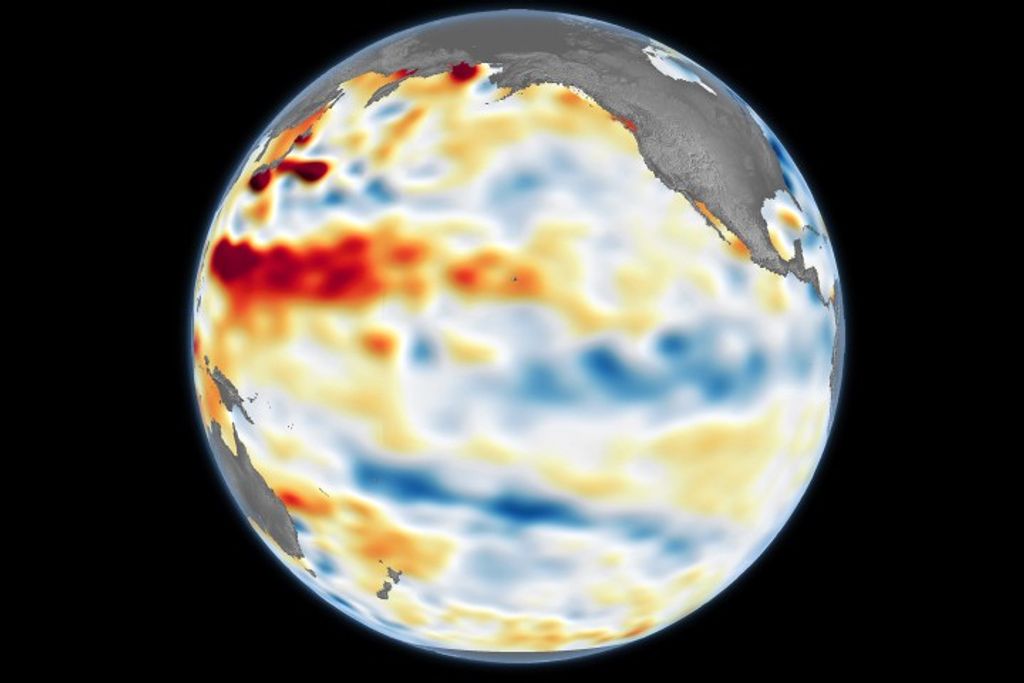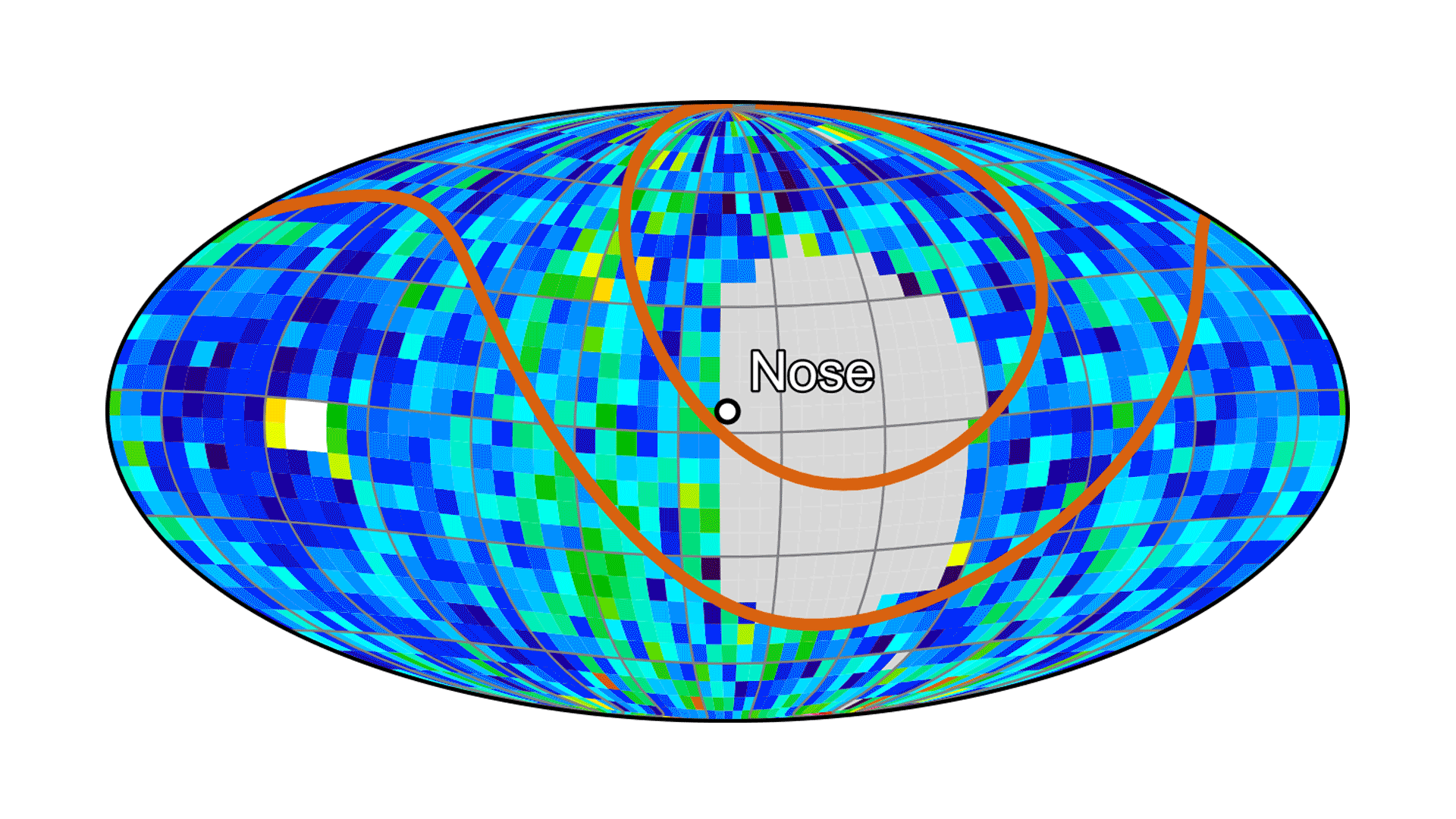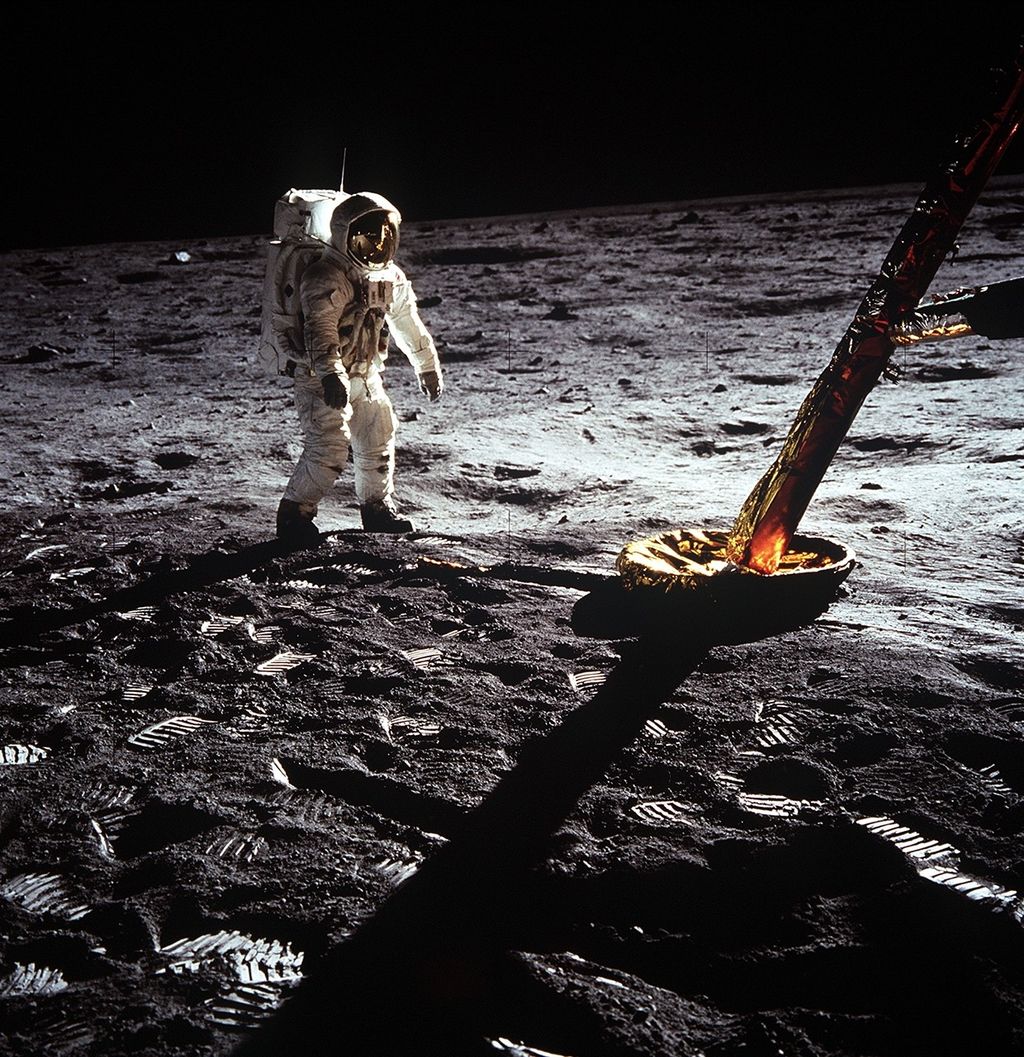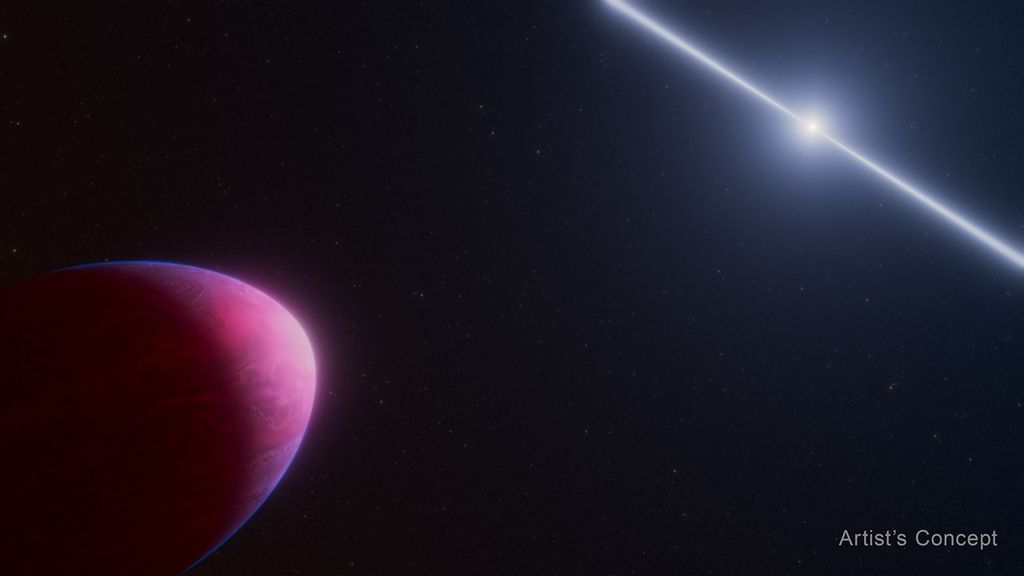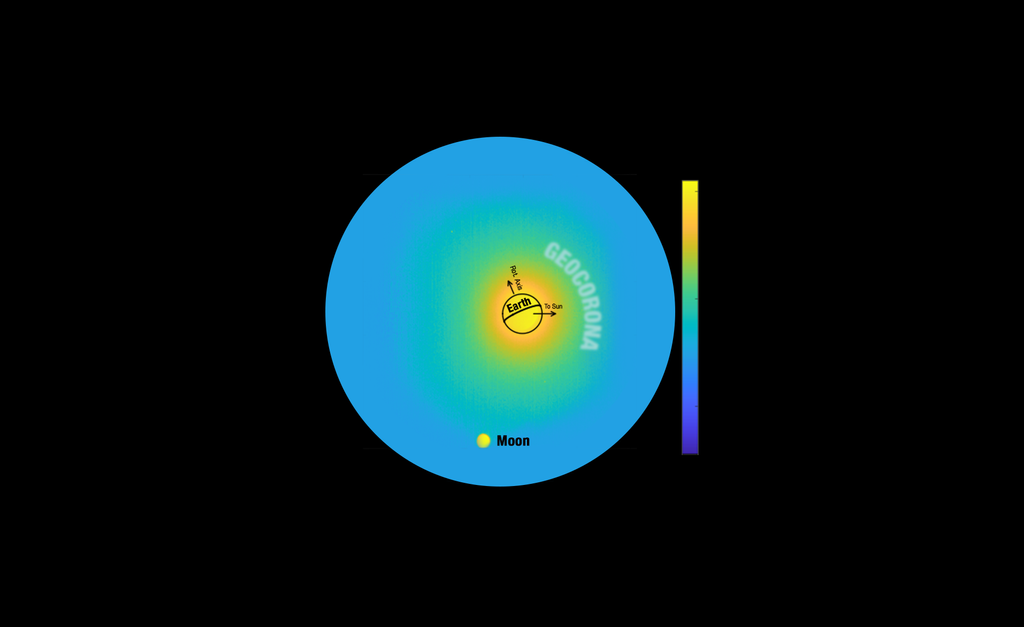1 min read
Crab Nebula

The eerie glow of a dead star, which exploded long ago as a supernova, reveals itself in this NASA Hubble Space Telescope image of the Crab Nebula. But don't be fooled. The ghoulish-looking object still has a pulse. Buried at its center is the star's tell-tale heart, which beats with rhythmic precision.
The "heart" is the crushed core of the exploded star. Called a neutron star, it has about the same mass as the sun but is squeezed into an ultra-dense sphere that is only a few miles across and 100 billion times stronger than steel. The tiny powerhouse is the bright star-like object near the center of the image.
This surviving remnant is a tremendous dynamo, spinning 30 times a second. The wildly whirling object produces a deadly magnetic field that generates an electrifying 1 trillion volts. This energetic activity unleashes wisp-like waves that form an expanding ring, most easily seen to the upper right of the pulsar.
The nebula's hot gas glows in radiation across the electromagnetic spectrum, from radio to X-rays. The Hubble exposures were taken in visible light as black-and-white exposures. The Advanced Camera for Surveys made the observations between January and September 2012. The green hue, representative of the broad color range of the camera filter used, gives the nebula a Halloween theme.
The Crab Nebula is one of the most historic and intensively studied supernova remnants. Observations of the nebula date back to 1054 A.D., when Chinese astronomers first recorded seeing a "guest star" during the daytime for 23 days. The star appeared six times brighter than Venus. Japanese, Arabic, and Native American stargazers also recorded seeing the mystery star. In 1758, while searching for a comet, French astronomer Charles Messier discovered a hazy nebula near the location of the long-vanished supernova. He later added the nebula to his celestial catalog as "Messier 1," marking it as a "fake comet." Nearly a century later British astronomer William Parsons sketched the nebula. Its resemblance to a crustacean led to M1's other name, the Crab Nebula. In 1928 astronomer Edwin Hubble first proposed associating the Crab Nebula to the Chinese "guest star" of 1054.
The nebula, bright enough to be visible in amateur telescopes, is located 6,500 light-years away in the constellation Taurus.
About the Object
- R.A. PositionR.A. PositionRight ascension – analogous to longitude – is one component of an object's position.05h 34m 31.94s
- Dec. PositionDec. PositionDeclination – analogous to latitude – is one component of an object's position.+22° 00' 52.2"
- ConstellationConstellationOne of 88 recognized regions of the celestial sphere in which the object appears.Taurus
- DistanceDistanceThe physical distance from Earth to the astronomical object. Distances within our solar system are usually measured in Astronomical Units (AU). Distances between stars are usually measured in light-years. Interstellar distances can also be measured in parsecs.6,500 light-years (2,000 parsecs)
About the Data
- Data DescriptionData DescriptionProposal: A description of the observations, their scientific justification, and the links to the data available in the science archive.
Science Team: The astronomers who planned the observations and analyzed the data. "PI" refers to the Principal Investigator.These datasets are from the HST proposal 12748, P.I.: M. Weisskopf (NASA Marshall Space Flight Center). - InstrumentInstrumentThe science instrument used to produce the data.HST>ACS/WFC
- Exposure DatesExposure DatesThe date(s) that the telescope made its observations and the total exposure time.January-September 2012 (The total exposure time is 200 minutes.)
- FiltersFiltersThe camera filters that were used in the science observations.F550M, narrow V
- Object NameObject NameA name or catalog number that astronomers use to identify an astronomical object.Crab Nebula, M1, NGC 1952
- Object DescriptionObject DescriptionThe type of astronomical object.Supernova remnant
- Release DateOctober 27, 2016
- Science ReleaseA Death Star’s Ghostly Glow
- Credit

This image is combined from separate exposures acquired by HST's ACS/WFC instrument in one filter, F550M (narrow V). Color was applied using a colormap assigning a different color to each brightness value.

Related Images & Videos

Crab Nebula (Black/White)
The eerie glow of a dead star, which exploded long ago as a supernova, reveals itself in this NASA Hubble Space Telescope image of the Crab Nebula. But don't be fooled. The ghoulish-looking object still has a pulse. Buried at its center is the star's tell-tale heart, which beats...
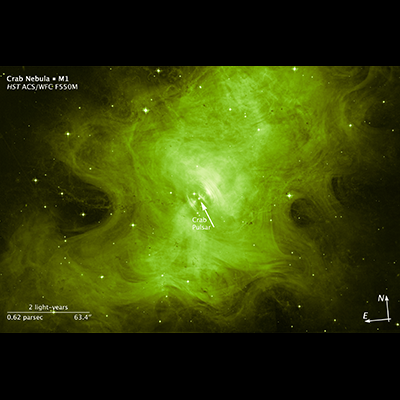
Scale and Compass for Crab Nebula
The eerie glow of a dead star, which exploded long ago as a supernova, reveals itself in this NASA Hubble Space Telescope image of the Crab Nebula. But don't be fooled. The ghoulish-looking object still has a pulse. Buried at its center is the star's tell-tale heart, which beats...
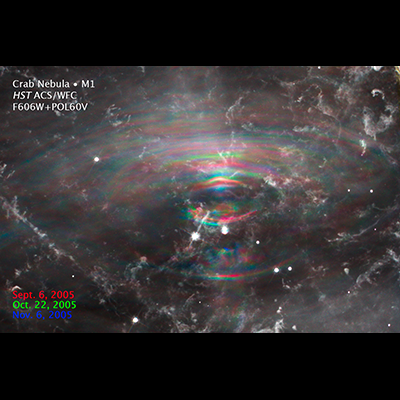
Changes in the Crab Nebula
This NASA Hubble Space Telescope image reveals how wave-like structures unleashed by the powerful remnant of a dead star move outward over time in the heart of the Crab Nebula. The surviving remnant is the collapsed core of a burned-out star, and is called a neutron star. This...
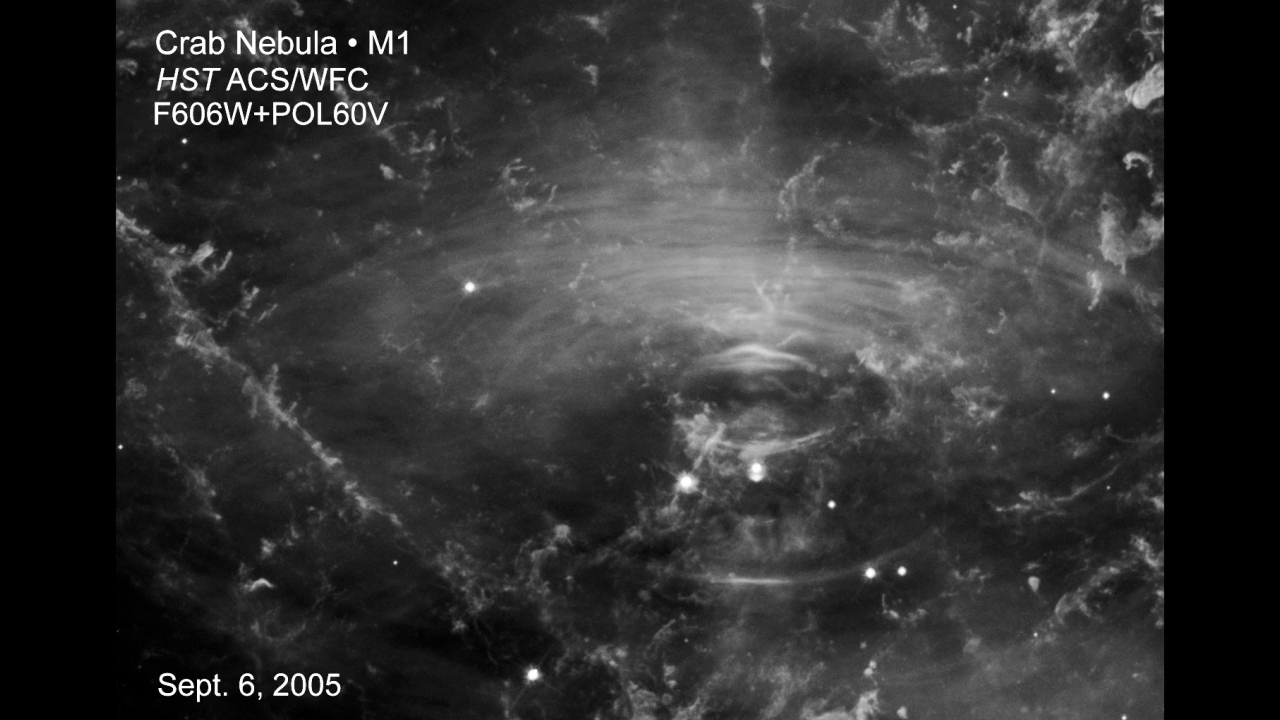
Motion in the Crab Nebula
This time-lapse movie of the Crab Nebula, made from NASA Hubble Space Telescope observations, reveals wave-like structures expanding outward from the "heart" of an exploded star. The waves look like ripples in a pond. The heart is the crushed core of the exploded star, or...
Share
Details
Claire Andreoli
NASA’s Goddard Space Flight Center
Greenbelt, Maryland
claire.andreoli@nasa.gov










